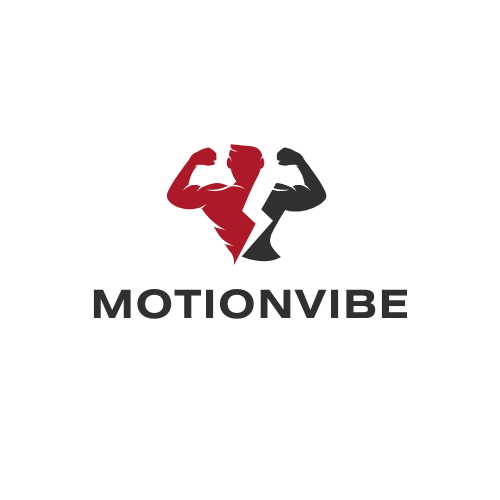Want to unlock the secret to a stronger, more sculpted upper body? Look no further than the often-overlooked serratus anterior. This muscle, affectionately known as the “boxer’s muscle,” plays a crucial role in stabilizing your shoulder blades and improving your overall athletic performance. Whether you’re throwing punches or just trying to reach that last slice of pizza, a strong serratus anterior will have your back—literally!
What Is Serratus Anterior Exercise?
Serratus anterior exercise targets the serratus anterior muscle, crucial for upper body strength. Strengthening this muscle promotes stability in the shoulder blades and enhances overall athletic performance. Various exercises focus on this muscle, making them essential for sports and daily activities. Common exercises include push-ups, wall slides, and plank variations.
Push-ups engage the serratus anterior effectively, particularly in the protraction phase. Wall slides allow individuals to maintain proper alignment while working the serratus anterior through shoulder flexion. Plank variations force engagement of the core while challenging the serratus anterior’s stability.
Improved serratus anterior strength leads to better performance in overhead movements. Increased strength also reduces the risk of shoulder injuries. Fitness enthusiasts often incorporate these exercises into their routines, acknowledging the importance of muscle activation for both aesthetics and function.
Beginners should focus on mastering form before progressing to more challenging variations. Gradually increasing intensity ensures proper adaptation and reduces injury risk. Utilizing resistance bands and weights can help progress the difficulty of serratus anterior exercises once a solid foundation is established.
Incorporating serratus anterior exercises into a fitness program creates a balanced upper body workout. A well-rounded approach builds muscle endurance, enhances stability, and supports overall shoulder health. This muscle plays a critical role in many movements, reinforcing the importance of its targeted training in any workout regimen.
Benefits of Serratus Anterior Exercise

Serratus anterior exercises offer multiple advantages for fitness enthusiasts and athletes. These workouts play a crucial role in enhancing overall performance and daily movement efficiency.
Improved Shoulder Stability
Improved shoulder stability results from targeting the serratus anterior. This muscle assists in maintaining proper scapular alignment during arm movements. Engaging the serratus anterior reduces the risk of shoulder dyskinesis, promoting better function in overhead activities. Enhanced stability leads to a stronger shoulder girdle, allowing for more efficient transfer of force during sports. Opportunities for incorporating serratus anterior exercises into warm-up routines facilitate increased stability and support in various upper body movements.
Enhanced Upper Body Strength
Enhanced upper body strength develops through consistent serratus anterior training. Strong serratus anterior muscles contribute to powerful pushing and pulling movements. Increased strength in this area improves overall performance in functional exercises like push-ups and bench presses. As strength improves, athletes notice better results in activities that require upper-body exertion. Exercises that engage the serratus anterior help establish a solid foundation for developing additional muscle groups, ensuring balanced strength throughout the upper body.
Injury Prevention
Injury prevention becomes a key benefit of engaging the serratus anterior. Strengthening this muscle supports the shoulder joint, reducing strain on surrounding ligaments and tendons. Proper recruitment of the serratus anterior during exercise prevents scapular winging, which can lead to shoulder injuries. Athletes often find that stronger serratus anterior muscles allow for improved shoulder mobility, further decreasing injury risks. Integrating serratus anterior exercises into a fitness routine establishes a proactive approach to maintaining shoulder health and longevity in physical activities.
Types of Serratus Anterior Exercises
Several effective exercises target the serratus anterior, enhancing upper body strength and stability.
Push-Up Plus
Begin in a standard push-up position. The movement incorporates an additional scapular protraction. After lowering the body, press through the palms to elevate the torso and push the shoulder blades forward. This engages the serratus anterior effectively. Modifying the exercise by performing it on knees offers a great alternative for beginners. Practicing this regularly builds strength, improving performance in various pushing movements.
Wall Slides
Stand against a wall with arms bent at 90 degrees. Keeping contact with the wall, slide arms upward while maintaining shoulder blade retraction. This exercise emphasizes controlled movement, engaging the serratus anterior throughout. Focusing on breath control enhances efficiency, ensuring maximum effectiveness. Repeat for several sets to develop strength and flexibility, benefiting overall shoulder mechanics.
Dumbbell Punches
Hold a lightweight dumbbell in each hand, elbows bent at 90 degrees. Extend one arm forward while keeping the opposite elbow stationary. This movement mimics a punching motion, isolating the serratus anterior. Switch arms to maintain balance and ensure even muscle development. Aim for multiple repetitions to maximize engagement and enhance upper body coordination, contributing to improved athletic performance.
How to Incorporate Serratus Anterior Exercise into Your Routine
Integrating serratus anterior exercises into a fitness routine boosts upper body strength and stability. Incorporating these movements offers substantial benefits for shoulder health.
Recommended Sets and Reps
Aim for three sets of 10 to 15 repetitions for each exercise. This range builds strength while maintaining proper form. Beginners can start with two sets, gradually increasing to three as they gain confidence. Focus on controlled, deliberate movements rather than rushing through repetitions. Adjust the reps based on individual goals. For endurance, higher reps with lighter resistance can be effective. Combining different exercises targeting the serratus anterior enhances overall effectiveness.
Frequency of Training
Train the serratus anterior two to three times weekly for optimal results. This frequency allows adequate recovery between sessions while promoting muscle growth. Scheduling workouts every other day can provide a balanced approach. Pairing serratus anterior exercises with other upper body workouts ensures comprehensive development. Ensure rest days to prevent strain, which can hinder progress. Incorporate serratus exercises at the beginning or end of a workout session for best results.
Tips for Effective Serratus Anterior Training
Engaging the serratus anterior effectively requires attention to detail during workouts. Focusing on proper technique enhances results while minimizing injury risk.
Proper Form and Technique
Align the body correctly when performing exercises. For the Push-Up Plus, position hands slightly wider than shoulders and maintain a straight plank. Exhale during the protraction phase and engage the core throughout the movement. For Wall Slides, keep the lower back flat against the wall while sliding arms upward. Ensure elbows and wrists maintain contact with the wall to achieve effective engagement. During Dumbbell Punches, stand tall and extend arms fully, keeping shoulder blades retracted. Remember to breathe steadily to aid stabilization.
Common Mistakes to Avoid
Avoid arching the back during exercises, as this can lead to improper engagement. Neglecting to maintain a neutral spine strains the lower back. When performing Push-Up Plus, don’t rush the movement; controlled pace enhances muscle activation. Skipping the warm-up can lead to reduced range of motion and increased injury risk. Overusing momentum instead of focusing on muscle contraction undermines effectiveness during various exercises. Taking inadequate rest between sets may impede performance and recovery. Adjusting the exercise routine based on individual fitness levels ensures safety and maximizes results.
Conclusion
Strengthening the serratus anterior is crucial for anyone looking to enhance upper body performance and stability. By incorporating targeted exercises into a fitness routine individuals can achieve better shoulder health and prevent injuries. Mastering the proper form and technique ensures effective engagement of this important muscle.
With consistent training and mindful adjustments based on personal fitness levels it’s possible to enjoy the numerous benefits that come from a well-developed serratus anterior. Whether through push-ups or dumbbell punches these exercises not only improve strength but also contribute to overall functional movement. Prioritizing this muscle will lead to a more balanced and powerful upper body.

